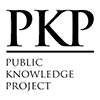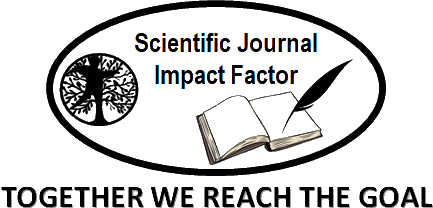Multidimensional Poverty Measurement in Selected Regions of Mazar-e-Sharif City, Afghanistan
Abstract
Keywords
Full Text:
PDFReferences
Abounoori, E., Salem, A. A., Arab Yarmohammadi, J. (2018). Evaluation Iran’s Educational Poverty in the Framework of a Multidimensional Approach to Measuring Poverty. Education Quarterly, 34(2):73-92. [In Persian]. http://qjoe.ir/article-1-1058-fa.html.
Akhlaqi, A., Hashemi, T., Arshad, N., Saberi, M., Mozaffari, M. (2020). Multidimensional Poverty Measurement in Kabul City. Kateb Scientific-Research Quarterly, 7 (16, 17): 25-55. [In Persian]. https://research.kateb.edu.af/dari/wp-content/uploads/sites/2/2021/02/2.pdf
Alkire, S. (2007a). The Missing Dimensions of Poverty Data: Introduction to the Special Issue. Oxford Development Studies, 35(4): 347-359. https://doi.org/10.1080/13600810701701863.
Alkire, S. (2007b). Choosing Dimensions: the Capability Approach and Multidimensional Poverty. CPRC Working Paper 88. University of Oxford. https://doi.org/10.1057/9780230592407_6.
Alkire, S., Santos, M. E. (2010). Multidimensional Poverty Index; Global MPI Report No. 1 (OPHI Briefing 01). Oxford Poverty & Human Development Initiative (OPHI), University of Oxford. https://ophi.org.uk/sites/default/files/2024-02/GMPI_2010_%28B1%29.pdf.
Alkire, S., Santos, M. E., Seth, S., Yalonetzky, G. (2010). Is the Multidimensional Poverty Index robust to different weights?. No: OPHI Research in Progress. 22a. https://ophi.org.uk/publication/RP-22a.
Alkire, S., Foster, J. (2011a). Counting and multidimensional poverty measurement. Journal of Public Economics, 95 (7–8), 476–487. https://doi.org/10.1016/j.jpubeco.2010.11.006
Alkire, S., Foster, J. (2011b). Understandings and misunderstandings of multidimensional poverty measurement. Journal of Economic Inequality, 9 (2), 289–314. https://doi.org/10.1007/s10888-011-9181-4.
Alkire, S., Housseini, B. (2014). Multidimensional Poverty in Sub-Saharan Africa: Levels and Trends. OPHI Working Paper 81, Oxford University. https://www.researchgate.net/publication/270579231.
Alkire, S., Santos, M. E., (2014). Measuring acute Poverty in the Developing World: Robustness and Scope of the Multidimensional Poverty Index. World Development, 59, 251-274.https://doi.org/10.1016/j.worlddev.2014.01.026.
Alkire, S., Seth, S. (2014). Inequality Among the MPI Poor, and Regional Disparity in Multidimensional Poverty: Levels and Trends. OPHI Briefing 25. University of Oxford. https://ophi.org.uk/sites/default/files/2024-03/OPHI_Briefing_25_2014_%28online%29.pdf
Alkire, S., Foster, J. E., Seth, S., Santos, M. E., Roche, J. M., Ballon, P. (2015). Multidimensional poverty measurement and analysis. Oxford: Oxford University Press. https://doi.org/10.1093/acprof:oso/9780199689491.001.0001
Alkire, S., Fang, Y. (2019). Dynamics of multidimensional poverty and Uni-dimensional income poverty: an evidence of Stability analysis from China. Social Indicators Research, 142: 25–64. https://doi.org/10.1007/s11205-018-1895-2.
Alkire S., Dirksen J., Nogales R., et al. (2020). Multidimensional poverty and COVID-19 risk factors: A rapid over-view of interlinked deprivations across 5.7 billion people. OPHI Working Paper 53. Oxford: University of Oxford. https://ophi.org.uk/publications/B-53
Artha, D. R. P., Dartanto, T. (2018). Multidimensional Approach to Poverty Measurement in Indonesia. Journal of Economic Cooperation and Development, 39 (3): 1-38. https://www.lpem.org/wp-content/uploads/2015/01/WP-LPEM_02_TeguhDes.pdf.
Ballon, P., Duclos, J.Y. (2016). A Comparative analysis of multidimensional poverty in Sudan and South Sudan. African Development Review, 28: 132-161. https://doi.org/10.1111/1467-8268.12198.
Barker, J., Grosh, M. (1994). Measurement the effect of geographic targeting on poverty reduction. Living Standard Measurement Study (LSMS) Working Paper, No. LSM 99. Washington, DC. : World Bank Group. http://documents.worldbank.org/curated/en/187171468776964190/Measuring-the-effects-of-geographic-targeting-on-poverty-reduction.
Bossert, W., Chakravarty, S. R., D'Ambrosio, C. (2013). Multidimensional Poverty and Material Deprivation with Discrete Data. Review of Income and Wealth, 59(1), 29-43. https://doi.org/10.1111/j.1475-4991.2012.00519.x.
Braybrook, D. Sen, A. (1990). The Standard of Living. Economics & Philosophy, 6(2): 339-350. https://doi.org/10.1017/S0266267100001334.
Carr, S. C. (2021). Setting ‘poverty thresholds’: whose experience counts?. Sustainability Science, 16 (1): 31–36. https://doi.org/10.1007/s11625-020-00859-x.
Cheng, X., Liu, Y., Yu, Z., et al. (2024). Adding a basis for sustainable poverty monitoring: The indicator systems and multi-source data of multi-dimensional poverty measurement. Environmental Development, 49 (2024) 100966. https://doi.org/10.1016/j.envdev.2024.100966.
Chiappero-Martinetti, E., Moroni, S. (2007). An analytical framework for conceptualizing poverty and re-examining the capability approach. The Journal of Socio-Economics, 36, 360–375. https://doi.org/10.1016/j.socec.2006.12.002.
Department of the Environment Transport and the Regions. (2000). Measuring Multiple Deprivation at the Small Area Level: The Indices of Deprivation 2000. DETR, London, United Kingdom. https://www.waterstones.com/book/-measuring-multiple-deprivation-at-the-small-area-level/great-britain-department-of-the-environment-transport-and-the-regions/university-of-oxford/9781851124534.
Decancq, K., Lugo, M.A. (2008). Setting Weights in Multidimensional Indices of Well-Being and Deprivation. OPHI Working Paper 18. University of Oxford. https://doi.org/10.2139/ssrn.1571124.
Eshaqzai, B., Ahmadi, J., Hossaini, K. (2017). Multidimensional Poverty Measurement in Kabul City. Kateb Scientific-Research Quarterly, 4 (4): 76-91. [In Persian]. https://research.kateb.edu.af/dari/wp-content/uploads/sites/2/2018/06/%D8%A7%D9%86%D8%AF%D8%A7%D8%B2%D9%87%DA%AF%DB%8C%D8%B1%DB%8C-%D9%81%D9%82%D8%B1-%DA%86%D9%86%D8%AF%D8%A8%D8%B9%D8%AF%DB%8C-%D8%AF%D8%B1-%D8%B4%D9%87%D8%B1-%DA%A9%D8%A7%D8%A8%D9%84.pdf
Frediani, A. A. (2010). Sen’s capability approach as a framework to the practice of development. Development in Practice, 20(2), 173-187. https://doi.org/10.1080/09614520903564181.
Fotros, M., Ghodsi, S. (2017). Comparing Iranian development plans by multidimensional poverty index calculated by Alkire-Foster method. Economic Growth and Development Research, 7(21), 45-64. [In Persian]. https://sid.ir/paper/192244/fa
Fotros, M., Ghodsi, S. (2018). Comparing multidimensional poverty of female and men headed households in urban and rural areas in Iran by Alkire-Foster method. Social Welfare Quarterly, 18(69), 227-185. [In Persian]. https://www.noormags.ir/view/fa/articlepage/1392918.
Ferreira, F. H. G., Lugo, M. A. (2013). Multidimensional poverty analysis: Looking for a middle ground. The World Bank Research Observer, 28(2), 220-235. https://doi.org/10.1093/wbro/lks013.
Garman, E.C., Avendano, M., Araya, R., et al. (2022). Understanding the complex relationship between multidimensional poverty and depressive symptoms among young South Africans: A cross-sectional study. Journal of Affective Disorders, 319 (2022) 352–360. https://doi.org/10.1016/j.jad.2022.09.101.
Gamboa, G., Mingorría, S., Scheidel, A. (2020). The meaning of poverty matters Trade-offs in poverty reduction programs. Ecol. Econ, 169 (2020) 106450. https://doi.org/10.1016/j.ecolecon.2019.106450.
Galbraith, J. K. (1992). The Nature of Mass Poverty. Harvard University Press, Michigan. https://doi.org/10.4159/harvard.9780674333109.
Haq, W., Azam, M., Babar, Z., Amir, S., Said, F. (2024). Investigation of multidimensional poverty in Pakistan at the national, regional, and provincial level. Humanities and Social Science Communication, (2024) 11:517. https://doi.org/10.1057/s41599-024-03005-5.
Iglesias, K., Suter, C., Beycan, T., Vani, B.P. (2017). Exploring multidimensional well-being in Switzerland: comparing three synthesizing approaches. Soc. Indic. Res, 134: 847–875. https://doi.org/10.1007/s11205-016-1452-9.
Jalali, M. (2020). Multidimensional Poverty Assessment in Urban Society of Iran. Trend Quarterly, 20 (83, 84): 69-90. [In Persian]. https://magiran.com/p2197232.
Jolliffe, D., Prydz, E.B. (2016). Estimating international poverty lines from comparable national thresholds. J. Econ. Inequal, 14 (2016) 185–198. https://doi.org/10.1007/s10888-016-9327-5.
Khan, A. U. Saboor, A., Hussain. A., et al. (2013). Investigating Multidimensional Poverty across the Regions in the Sindh Province of Pakistan. Science Business Media Dordrecht. https://www.jstor.org/stable/24721441
Kim, S.G. (2016). What have we called as “poverty”? A multidimensional and longitudinal perspective. Social Indicators Research, 129: 229-276. https://link.springer.com/article/10.1007/s11205-015-1101-8
Liu, Y., Xu, Y. (2016). A geographic identification of multidimensional poverty in rural China under the framework of sustainable livelihoods analysis. Applied Geography, 73, 62- 76. https://doi.org/10.1016/j.apgeog.2016.06.004
Maket, I. (2024). Analysis of incidence, intensity, and gender perspective of multidimensional urban poverty in Kenya. Heliyon, 10 (2024) e30139. https://doi.org/10.1016/j.heliyon.2024.e30139.
Navvabpour, H. (2021). A Study on Multidimensional Poverty and Contribution of Dimensions in the Provinces of Iran. Iranian Journal of Economic Research. https://doi.org/10.22054/ijer.2022.65481.1067.
NSIA. (2021). Afghanistan Statistical Yearbook of 2020. National Statistical and Information Authority (NSIA) of Afghanistan, 1st version, No: 42. http://nsia.gov.af:8080/wp-content/uploads/2021/04/Statistical-Year-book-2020.pdf.
NSIA., MoPH., KIT. (2019). Afghanistan Health Survey 2018. National Statistics and Information Authority (NSIA) of Afghanistan, Ministry of Public Health of Afghanistan, and Royal Tropical Institute (KIT). https://www.kit.nl/wp-content/uploads/2019/07/AHS-2018-report-FINAL-15-4-2019.pdf
NSIA., OPHI. (2019). Afghanistan multidimensional poverty index 2016–2017: report and analysis. National Statistics and Information Authority (NSIA) of Afghanistan, and Oxford Poverty and Human Development Initiative (OPHI). https://www.mppn.org/wp-content/uploads/2019/03/AFG_2019_vs9_online.pdf.
Najitama, E., Maski, G., Manzilati, A. (2020). Analysis of multidimensional poverty dynamics in Indonesia: the effect of demographic and institutional factors. Journal of Innovation in Business and Economics, 4 (2) (2020) 87–96. https://doi.org/10.22219/jibe.v4i02.15630.
OECD. (2021). Pensions at a Glance 2021 OECD AND G20 INDICATORS. OECD. https://doi.org/10.1787/19991363
Oxford Poverty and Human Development Initiative. (2018). Global Multidimensional Poverty Index 2018: The Most Detailed Picture to Date of the World’s Poorest People. University of Oxford, UK. https://ophi.org.uk/Publications/GMPI-2018
Raghfar, H., Mohammadi Fard, Z., Sangari Mohazzab, Kobra. (2013). Multidimensional Poverty Measurement in Tehran City. Economic Researches (Growth & Sustainable Development) Quarterly, 13 (2): 1-16. [In Persian]. http://ecor.modares.ac.ir/article-18-4983-en.html.
Roshani, M., Cihangir-Çamur, K. (2023). A systematic review of multidimensional urban poverty and deprivation indicators. Geographies, Planning & Tourism Studios, 3(1): 50-69. https://doi.org/10.5505/gpts.2023.03511.
Rowntree, S. (1902). Poverty: A Study of Town Life. London: Longman, Green. https://www.jstor.org/stable/43787596.
Ridley, M.W., Rao, G., Schilbach, F. (2020). Poverty, Depression, and anxiety: causal evidence and mechanisms. National Bureau of Economic Research, No. w27157. https://doi.org/10.1126/science.aay0214.
Saith, R. (2001). Social Exclusion: the Concept and Application to Developing Countries. Queen Elizabeth House, Oxford. https://ideas.repec.org/p/qeh/qehwps/qehwps72.html.
Saunders, P., Wong, H., Wong, W. P. (2014). Deprivation and Poverty in Hong Kong. Social Policy & Administration, 48(5), 556-575. https://doi.org/10.1111/spol.12042.
Sen, A. K. (2000). Development as freedom (1st. ed.). New York: Knopf. https://www.uio.no/studier/emner/matnat/ifi/INF9200/v10/readings/papers/Sen.pdf.
Sen, A. Anand, S. (1997). Concepts of human development and poverty: a multidimensional perspective. In: Poverty and Human Development. Human Development Papers 1997. New York: United Nations Development Programme. https://www.econbiz.de/Record/concepts-of-human-development-and-poverty-a multidimensional-perspective-anand-sudhir/10001537335
Sen, A. K. (1992). Inequality Reexamined. Cambridge: Harvard University Press. https://doi.org/10.1017/S026626710000328X.
Sen, A. K. (1985). Commodities and Capabilities. Elsevier Science Publishers B.V., North-Holland, 1985. https://doi.org/10.2307/2232999.
Sen, A. K. (1976). Poverty: an ordinal approach to measurement. Econometrica: Journal of the Econometric Society, 219–231. https://doi.org/10.2307/1912718.
Steele, J.E., Sundsøy, P.R., Pezzulo, C., Alegana, V.A., Bird, T.J., Blumenstock, J., Iqbal, A.M. (2017). Mapping poverty using mobile phone and satellite data. Journal of the Royal Society Interface, 14 (127), 20160690. https://doi.org/10.1098/rsif.2016.0690.
Suppa, N. (2016). Comparing monetary and multidimensional poverty in Germany. OPHI Working Paper 103. University of Oxford. http://workingpapers.qeh.ox.ac.uk/pdf/ophiwp/OPHIWP103_1.pdf.
Trani, J. F., Cannings, T. I. (2013). Child poverty in a conflict situation: a multidimensional profile and an identification of the poorest children in Western Darfur. Brown School Faculty Publications. 42. https://openscholarship.wustl.edu/brown_facpubs/42.
Trani, J. F., Biggeri, M. Mauro, V. (2013). The Multidimensionality of Child Poverty: Evidence from Afghanistan. Social Indicators Research, 112 (2): 391–416. https://doi.org/10.1007/s11205-013-0253-7.
Trani, J. F., Kuhlberg, J., Cannings, T., Chakkal, D. (2016). Multidimensional poverty in Afghanistan: who are the poorest of the poor?. Oxford Development Studies, 44:2, 220-245. https://doi.org/10.1080/13600818.2016.1160042.
Townsend, P. (1993). The International analysis of Poverty. Harvester Wheatsheat, London, UK. https://doi.org/10.4324/9781315835099.
UNDP. (2010). Human Development Report 2010: The Real Wealth of Nations: Pathways to Human Development. New York. https://hdr.undp.org/content/human-development-report-2010.
UNDP. (2023). Afghanistan: Socio-Economic Outlook 2023. https://www.undp.org/afghanistan/publications/afghanistan-socio-economic-outlook-2023.
United, N. (2015). Transforming our world: The 2030 agenda for sustainable development. General Assembly 70 session. https://www.unfpa.org/resources/transforming-our-world-2030-agenda-sustainable-development.
UNDP., OPHI. (2023). Global Multidimensional Poverty Index 2023 Unstacking global poverty: Data for high-impact action. https://hdr.undp.org/content/2023-global-multidimensional-poverty-index-mpi#/indicies/MPI
Whelan, C. T., Maître, B. (2010). Protecting the vulnerable: Poverty and social exclusion in Ireland as the economic crisis emerged. The Economic and Social Review, 41(4), 501-525. https://ideas.repec.org/p/ucd/wpaper/201023.html.
Wang, X., Feng, H. (2020). China’s multidimensional relative poverty standards in the post-2020 era: international experience and policy orientation. Chinese Rural Economy, (3), 2–21. https://caod.oriprobe.com/articles/58417350/China_s_Multidimensional_Relative_Poverty_Standard.htm
Watmough, G.R., Marcinko, C.L., Sullivan, C., Tschirhart, K., Mutuo, P.K., Palm, C.A., Svenning, J.-C. (2019). Socioecologically informed use of remote sensing data to predict rural household poverty. Proceedings of the National Academy of Sciences, 116 (4), 1213–1218. https://doi.org/10.1073/pnas.1812969116.
Watkins, K. (2006). Human development report 2006-beyond scarcity: power, poverty and the global water crisis. UNDP Human Development Reports, 2006. https://link.springer.com/book/9780230500587.
Wang, X. L., Alkire, S. (2009). China's multidimensional poverty measurement: estimation and policy implications. Chin. Rural Econ, 12, 4–10. https://www.researchgate.net/publication/256028922_Measurement_of_Multidimensional_Poverty_in_China_Estimation_and_Policy_Implications
Yousefi, A., Asadi Khob, H., Afshari, M. (2013). An assessment of multidimensional poverty in nomadic nomads of Iran. Agricultural Economics, 7(2), 47-68. [In Persian]. https://civilica.com/doc/763213.
Yuheng, L., Qihui, J., Ao, L. (2022). Understanding the multidimensional poverty in South Asia. Journal of Geographical Sciences, 32(10), 2053-20. https://doi.org/10.1007/s11442-022-2036-z.
Zanbak, M., ÇAĞATAY, S. (2021). Increasing Number of Children and Poverty: A Multidimensional Approach. EGE Academic Review. https://doi.org/10.21121/eab.1015821.
Zenebe, E. A., Ketebo, J. H., Chala, B. W. (2020). Feminization of multidimensional urban poverty in sub-Saharan Africa: evidence from selected countries. Afr. Dev. Rev. 32 (4) (2020) 632–644.
https://doi.org/10.1111/1467-8268.12466
DOI: http://dx.doi.org/10.18415/ijmmu.v12i2.6649
Refbacks
- There are currently no refbacks.
Copyright (c) 2025 International Journal of Multicultural and Multireligious Understanding

This work is licensed under a Creative Commons Attribution-NonCommercial-NoDerivatives 4.0 International License.
https://ijmmu.com
editor@ijmmu.com
facebook.com/ijmmu
Copyright © 2014-2018 IJMMU. All rights reserved.



































